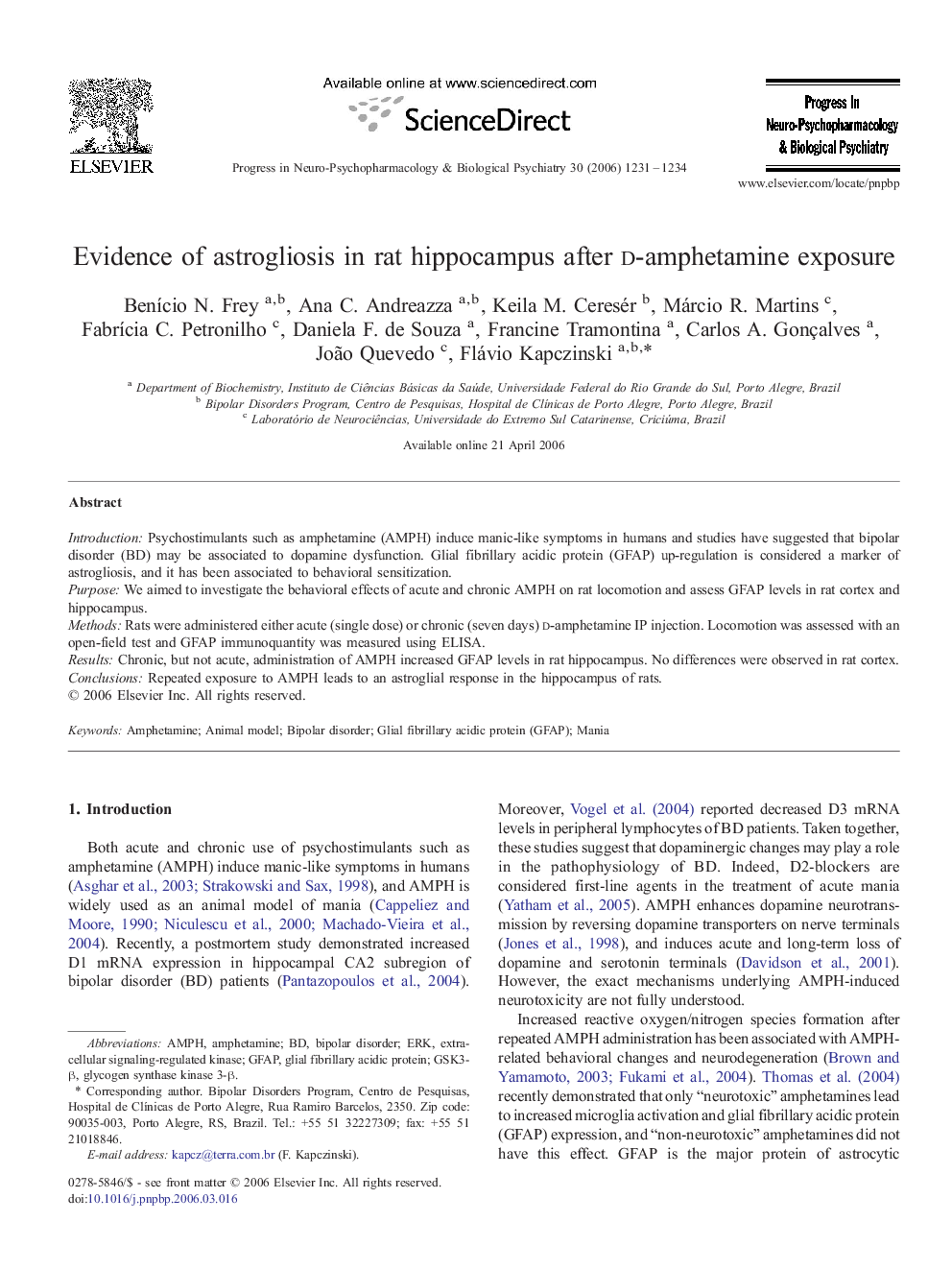| کد مقاله | کد نشریه | سال انتشار | مقاله انگلیسی | نسخه تمام متن |
|---|---|---|---|---|
| 2566630 | 1128088 | 2006 | 4 صفحه PDF | دانلود رایگان |

IntroductionPsychostimulants such as amphetamine (AMPH) induce manic-like symptoms in humans and studies have suggested that bipolar disorder (BD) may be associated to dopamine dysfunction. Glial fibrillary acidic protein (GFAP) up-regulation is considered a marker of astrogliosis, and it has been associated to behavioral sensitization.PurposeWe aimed to investigate the behavioral effects of acute and chronic AMPH on rat locomotion and assess GFAP levels in rat cortex and hippocampus.MethodsRats were administered either acute (single dose) or chronic (seven days) d-amphetamine IP injection. Locomotion was assessed with an open-field test and GFAP immunoquantity was measured using ELISA.ResultsChronic, but not acute, administration of AMPH increased GFAP levels in rat hippocampus. No differences were observed in rat cortex.ConclusionsRepeated exposure to AMPH leads to an astroglial response in the hippocampus of rats.
Journal: Progress in Neuro-Psychopharmacology and Biological Psychiatry - Volume 30, Issue 7, 30 September 2006, Pages 1231–1234